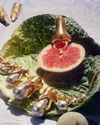The founders of four skincare brands reveal how they bring their products even closer to their customers by offering them a novel experience that appeals to their intellect and interests.

HOW WE CONSUME our skincare has evolved considerably over the years. What started as homemade salves and remedies sold in apothecaries and later, in drugstores, shifted to glossy, department store counters selling jars full of promises. My mum was a devoted user of Estée Lauder when I was growing up. Accompanying her on these jaunts would leave me ooh-ing and aah-ing at the beautiful perfume flacons and wondrous jars of serums and creams, like the iconic Advanced Night Repair, that seemed to hold the secret elixir of youth. The experience then was of high glamour and low accountability. The consumer didn’t know what chemicals and ingredients were in those bottles and jars, and would not think to ask what they were and how they worked on the skin.
Today, many brands still bank on the beauty counter experience. In an unhurried and relaxed environment, beauty advisers are able to chat with you, assess your skin needs and then recommend the right products. In theory, this should work. But in reality, anyone who has been persuaded to buy more than they could afford — or would reasonably need — or has encountered less than knowledgeable sales staff, would have found the experience frustrating at best, intimidating at worst.
The opening of Sephora’s flagship store in Singapore in 2009 revolutionised the way we bought beauty in this island nation. In a frenetic, high-octane environment of bright lights and loud music, this was far from the sedate experience in traditional beauty boutiques and department stores. Like kids in candy shops, customers were free to swatch, sniff and sample to their heart’s content and even rummage through drawers to find the stock they needed. But while some relished the independence of such a set-up, others lamented the crowds, stacked shelves and the lack of direction, feeling lost among all that choice, and clueless as to what their skin truly needed.
この記事は T Singapore: The New York Times Style Magazine の November 2018 版に掲載されています。
7 日間の Magzter GOLD 無料トライアルを開始して、何千もの厳選されたプレミアム ストーリー、9,000 以上の雑誌や新聞にアクセスしてください。
すでに購読者です ? サインイン
この記事は T Singapore: The New York Times Style Magazine の November 2018 版に掲載されています。
7 日間の Magzter GOLD 無料トライアルを開始して、何千もの厳選されたプレミアム ストーリー、9,000 以上の雑誌や新聞にアクセスしてください。
すでに購読者です? サインイン

Look At Us
As public memorials face a public reckoning, there’s still too little thought paid to how women are represented — as bodies and as selves.

Two New Jewellery Collections Find Their Inspiration In The Human Anatomy
Two new jewellery collections find their inspiration in the human anatomy.

She For She
We speak to three women in Singapore who are trying to improve the lives of women — and all other gender identities — through their work.
Over The Rainbow
How the bright colours and lively prints created by illustrator Donald Robertson brought the latest Weekend Max Mara Flutterflies capsule collection to life.

What Is Love?
The artist Hank Willis Thomas discusses his partnership with the Japanese fashion label Sacai and the idea of fashion in the context of the art world.

The Luxury Hotel For New Mums
Singapore’s first luxury confinement facility, Kai Suites, aims to provide much more than plush beds and 24-hour infant care: It wants to help mothers with their mental and emotional wellbeing as well.

Who Gets To Eat?
As recent food movements have focused on buying local or organic, a deeper and different conversation is happening among America’s food activists: one that demands not just better meals for everyone but a dismantling of the structures that have failed to nourish us all along.

Reimagining The Future Of Fashion
What do women want from their clothes and accessories, and does luxury still have a place in this post-pandemic era? The iconic designer Alber Elbaz thinks he has the answers with his new label, AZ Factory.

A Holiday At Home
Once seen as the less exciting alternative to an exotic destination holiday, the staycation takes on new importance.
All Dressed Up, Nowhere To Go
Chinese supermodel He Sui talks about the unseen pressures of being an international star, being a trailblazer for East Asian models in the fashion world, and why, at the end of the day, she is content with being known as just a regular girl from Wenzhou.